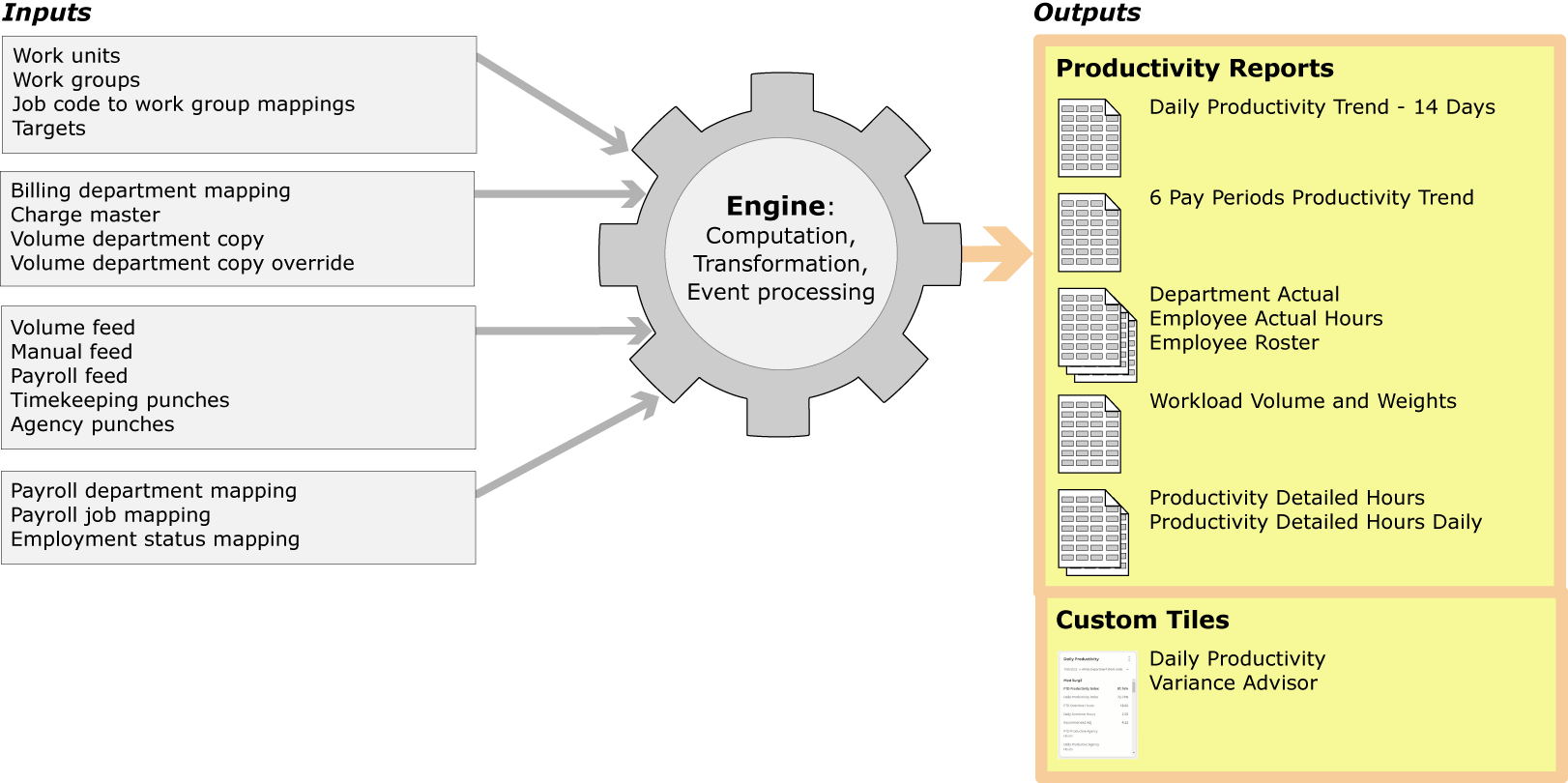Healthcare Productivity Configuration Overview
Summary of Healthcare Productivity, configuration steps, and integrations.
Healthcare Productivity allows managers to analyze payroll, volume, and daily labor data so that they can make informed budget decisions and schedule the right people in the right places at the right times. Managers can see actionable, timely metrics that are based on the actual volume for the day, the core scheduling plan, and the staffing decisions throughout the day.
Managers can then take corrective action before the end of the pay period to avoid falling outside of the acceptable productivity range.
Why use Healthcare Productivity?
To answer this question: How did I do?
- Based on the actual volume for the day,
- And the core scheduling plan that I had in place,
- And the staffing decisions that I made throughout the day.
Features
- Standard reports compare volume and payroll data from third-party systems to daily labor counts.
- Standard, formatted reports show variance trends in daily and pay period productivity that are based on daily timekeeping, daily volume, and payroll activity.
- Import labor types, paycode definitions and categories from the timecard.
- Support standard time periods and fiscal calendars.
- Configuration of thresholds, targets, ad hoc reports, and business structure is flexible.
- Data is shown by volume, work units, work group, or service line.
-
The Variance Advisor smart tile (custom tile) notifies managers of missed goals in productivity and labor budgets so that they investigate and take corrective actions. Healthcare Productivity metrics and reports provide productivity data, but Variance Advisor holds managers accountable for meeting the goals.
Data flow for Healthcare Productivity

How to configure Healthcare Productivity
Application Setup
To prepare the system for Healthcare Productivity and for ongoing updates and edits, configure the following in Application Setup:
- Configure Work Units:
-
Configure work units (WU) to define departments, work groups, and combine business structure nodes or jobs into single entities for productivity analysis. All reports require work units.
- Assign daily labor to work unit through bulk loading.
- Assign billing system departments volume to work units through bulk loading.
- Assign payroll system departments to work units through bulk loading.
- (Optional) Configure hyperfinds; see the Hyperfind Queriestopic.
-
- Configure Targets for :
- Fixed and variable targets
- Configure Custom Metrics for Healthcare Productivity
- Configure Labor:
- Configure paycodes and mapping categories.
- Configure labor categories
- Assign labor types to people.
- For agency workers, assign pay rules to agency labor types.
Integrations for Healthcare Productivity
For bulk imports and exports to set up the system, deploy, configure, install, and run the Healthcare Productivity integrations and the installation kit as follows:
- Deploy Integrations to your Atom.
- Configure Connection Settings for Integrations.
- Configure the data for bulk integrations:
- Configure the data for transactional integrations:
- Configure the SFTP Connection.
- Install Integrations.
- Run and Test Integrations.
